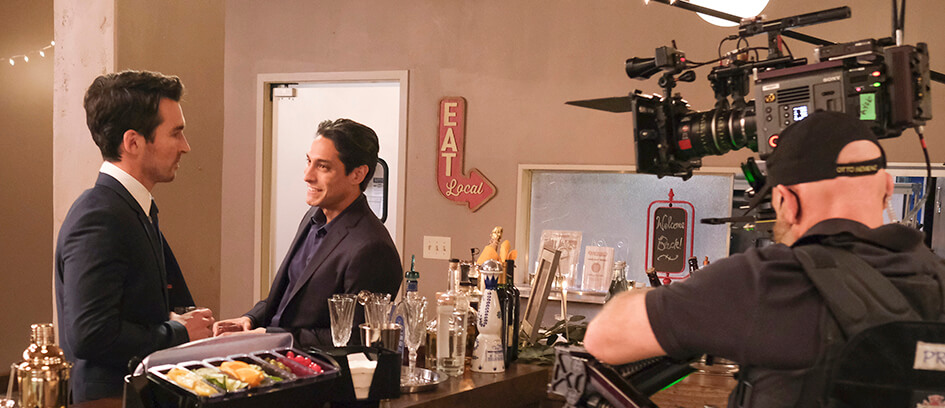Common Camera Equipment Used on Set

If you've worked as a Background Actor, Stand-In, or double, you know a lot of work goes into making the perfect shot. Part of that process involves deciding the type of camera and equipment necessary to turn the director's vision into reality. Here are some camera rigs and setups you may see the next time you work on set.
Single camera vs. multi-camera
First, it's important to note there are two types of productions: single and multi-camera. Single camera refers to projects that film using one camera at a time. Films (Queenpins, Coming 2 America, The Little Things) and dramatic TV shows (Loki, Grey's Anatomy, Law & Order: Organized Crime) are almost always shot single-cam, while some TV comedies (Girls5Eva, Hacks, Mythic Quest) are as well. The different types of camera equipment and techniques we're going to cover are primarily for single camera setups.
At Central Casting, we also cast many multi-camera productions, like The Upshaws, Side Hustle, and Call Me Kat. Multi-cam shows are mainly sitcoms filmed in front of a live audience that use three or more fixed cameras at once. This allows the crew to capture multiple angles in one take, cutting down on production time.
A single camera Stand-In's primary responsibilities deal more with lighting and camera setups, while multi-cam Stand-Ins often run through an entire episode in place of the principal actor to determine camera blocking. If you're interested in Stand-In work, be sure to read through our Stand-In article category.
Camera equipment
Handheld
One of the most fundamental filming techniques is the handheld shot. The camera operator holds the camera, often with a shoulder rig, which allows them to follow the subject throughout the scene. While handheld camera work gives the filmmakers a lot of freedom, it can also add intensity, urgency, and panic to a scene.
Stabilizer
While similar to the handheld technique, a stabilizer creates a smooth shot while still allowing the camera operator complete freedom to follow the subject throughout a scene. To achieve a steady shot, equipment is attached to the operator with counterweights or a gimbal (pivoted supports) to counteract movement. If you've worked on set, you've likely heard this referred to as a Steadicam.
Dolly
To create smooth horizontal shots, a camera is placed on a wheeled cart or something similar then pushed along a track. Dollies are often chosen for shots where the camera moves toward or away from the subject and to horizontally track movement. Depending on the budget and contents of a scene, a similar effect can be achieved with other gear like a slider or a cable cam.
Crane/jibs
The terms crane and jibs are often used interchangeably to mean a piece of equipment with a camera on one end and a counterweight on the other. These come in all sizes and are used to smoothly track movement and add height to a scene. Like stabilizers, cranes and jibs allow for the filming of steady tracking shots, but can produce a larger scope as they are not bound to the limits of a camera operator.
When you're booked on a Central Casting production, it's likely you'll encounter most if not all of these types of camera equipment (and many others) during your time on set. Understanding your role and how all elements of production come together help you become a professional Background Actor. To learn more about what goes into making movies and TV shows, check out our articles The Three Stages of TV and Film Production and Production Crew Members You Should Know.